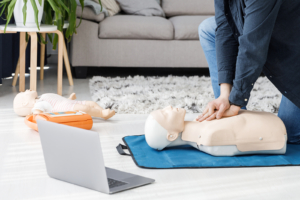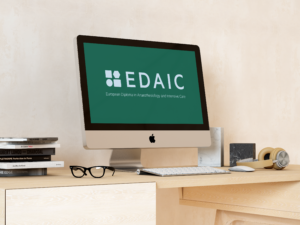Newsletter 2022
Newsletter July 2022: ESAIC/SESAM Collaboration
Marc Lazarovici – SESAM President marc.lazarovici@med.uni-muenchen.de
Doris Ostergaard – ESAIC Simulation Committee Chair Doris.OEstergaard@regionh.dk
The ESAIC Simulation Committee
The ESAIC Simulation Committee has the ambition to promote simulation as an educational methodology for improving clinical practice. This includes developing non-technical skills and the social and cognitive standards for trainees and board-certified anaesthesiologists at the European level. Its vision is: “Simulation as a standard training methodology for anaesthesiologists across Europe”.
It will promote the effectiveness of simulation training and show how it can be integrated into a national anaesthesiology curriculum. To achieve this, it will focus on an approach that includes:
- Research and Publication
- Education
- Networking and Collaboration
Current Activity
The committee is comprised of some of the most experienced simulation experts in Europe. It includes members who are directors at several key simulation centres, and some are past presidents of SESAM. It is led by the Chair, Doris Østergaard.
Doris is a Professor in Medical Education and Simulation at the University of Copenhagen and the Copenhagen Academy for Medical Education and Simulation (CAMES), and a member of the Danish National Council for Education of Doctors. She has direct experience in implementing simulation-based training in the national training program for anaesthesiologist in Denmark.
You can learn more about the committee here: https://www.esaic.org/about/committees/simulation-committee/
The committee has run a major international survey: Simulation-based education and training in anaesthesia during residency in Europe: where are we now? It brings together the first overview of the state of European simulation training. This is an excellent source for informing future strategy. The results of this survey have been published in the European Journal of Anaesthesiology. 1
It has already run successful educational events. The Anaesthesia and Intensive Care Crisis Simulation Masterclass: Helsinki Declaration through High Fidelity Simulation was developed in collaboration with the Patient Safety and Quality Committee. The committee members also work closely with the ESAIC HQ’s congress team to run the SimLab. This has been very successful at previous congresses.
Growth through Collaboration
Recently the committee signed an agreement with The Society for Simulation in Europe, SESAM.
SESAM’s mission is to encourage and support the use of simulation in healthcare for the purpose of training and research. They are not affiliated to any medical or other specialty. Members have a wide and varied background within healthcare and medical education, but all with an interest and passion in medical simulation.
The Simulation Committee strategy aligned clearly with SESAM’s mission and an agreement was signed earlier this year. They will collaborate to develop sessions at Euroanaesthesia, run education events to promote the use of simulation and devise research to further understand the effectiveness and best use of this unique teaching methodology.
SESAM had already formed the foundation of a National Simulation Development Programme to develop local champions within countries that are starting to implement simulation practice in their country. It will now work with the ESAIC to develop and promote this programme.
The Future
The joint ESAIC/SESAM vision is to facilitate the implementation of simulation-based training for trainees in different countries across Europe, starting in Eastern Europe. In addition, the intention is to describe the benefit of simulation as an educational method and share where it could be used best, based on the European Curriculum for specialist training in anaesthesiology.
ESAIC and SESAM are currently working in collaboration with the Romanian Society of Anaesthesia and Intensive Care (SRATI) and the 5 main simulation centres in Romania to develop faculty for hi-fidelity simulation and to work towards a national curriculum for simulation training for their anaesthesia trainees. The National Simulation Development Programme will be very well suited to support their goals.
References
- Savoldelli, Georges L.; Østergaard, Doris European Journal of Anaesthesiology: 2022 – doi: 10.1097/EJA.0000000000001667
[maxbutton id=”1″ url=”https://www.esaic.org/newsletter/” text=”Read the Newsletter” ]











